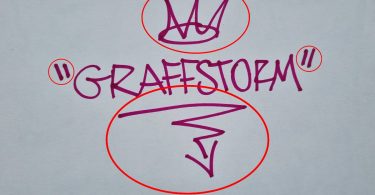Spray paint pressure isn’t all created equal – and for good reason. Spray paint for art needs to cater for a wide range of different art styles to achieve the best outcome for every artist.
In short, the main difference between low and high-pressure spray paint is the output volume – the speed at which the paint leaves the can.
As a general rule, low pressure spray paint offers better control for detailed work and can help prevent paint dripping. High pressure spray paint is better for covering large areas faster, although beginners may find it more difficult to control.
Now we know the main difference between low and high pressure spray paint, let’s take a look at some of the more in-depth differences to help decide what’s best for your graffiti style.
What is Low Pressure Spray Paint?
Low pressure spray paint is generally defined as having a lower amount of pressure added to the can during production, which means it has a lower output when sprayed.
A lower output means that when using the can, it’s easier to control compared to higher pressure, higher output cans. This makes it much better for detailed pieces to achieve fine lines or to paint smaller pieces.
Low pressure paint also reduces the likeliness of drips when the can is sprayed close to the wall. This not only makes it easier to achieve clean lines for your piece, but it’s also an added bonus for beginners as low pressure spray paint is easier to control.
Although fat caps can be used on most low pressure art paint, it’s often best to use skinny caps to keep the output low and maintain control.

What is High Pressure Spray Paint?
High pressure spray paint is generally defined as having a higher amount of pressure added to the can during production, which results in a higher output of paint when sprayed. This means more paint hits the surface you’re painting in a shorter amount of time.
High pressure paint is best used for painting large areas quickly, as the paint fires out the can much faster than compared to lower pressure spray paint. If you’re painting a large piece, or need to get the job done quickly, high pressure is the way to go.
The main downside to high pressure paint is that it sacrifices control for speed. This makes it more difficult to achieve finer lines in your pieces, or paint things like portraits.
Although artists experienced with spray paint may be able to control high pressure paint with precision, beginners may prefer using lower pressure paint when starting out.
Most high pressure spray paint will come stocked with a fat cap by default, as these cans are designed to produce thicker lines. It’s worth mentioning, as you may need to purchase additional skinny caps to achieve fine lines with high pressure cans.

Do Spray Paint Caps Affect Pressure?
Depending on the spray paint cap you’re using, the output of the paint can be affected. It’s important to distinguish between output and pressure here, as the pressure of the can will remain the same regardless of the cap.
Skinny caps are designed to output less paint, so naturally less pressure will release when sprayed. A lower output means it’s easier to produce more detailed pieces.
Using a skinny cap with a high pressure spray can allows for finer details to be achieved but increases the risk of paint dripping and overspray. This isn’t ideal for beginners, although more experienced artists should have an easier time controlling the can.
Fat caps release more pressure, so paint is output at a higher rate. This makes filling large areas much faster and can allow for thicker lines.
Using a fat cap with a low pressure can will still produce thicker lines, although the weaker pressure may slow you down when painting large pieces.
What Pressure Spray Paint Should I Use?
To summarise, here’s what to should consider when choosing between high or low pressure spray paint:
Are you painting a detailed piece that requires fine lines? Are you painting a small piece or making canvas art?
Low pressure paint paired with a skinny cap will be best in these situations as you’ll have more control – allowing for detailed work and less drips. We also recommend starting off with low pressure paint if you’re a beginner.
Are you painting a big piece that requires filling in a lot of space? Do you need to get the job done quickly?
High pressure paint with a fat cap will be best in these scenarios – which is no wonder why graffiti artists love this combo. Although you’ll be sacrificing control for speed, painting with high pressure paint is great for developing your can control.




